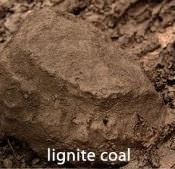Coal
Coal is a combustible black or brownish-black sedimentary rock, formed as coal strata called coal seams. Coal is mostly carbon with variable amounts of other elements, chiefly hydrogen, sulfur, oxygen, and nitrogen.
Coal is formed when dead plant matter decays into peat and is converted into coal by the heat and pressure of deep burial over millions of years. Vast deposits of coal originate in former wetlands called coal forests that covered much of the Earth’s tropical land areas during the late carboniferous and Permian times. However, many significant coal deposits are younger than this and originate from the Mesozoic and Cenozoic eras.
Coal is primarily used as a fuel. While coal has been known and used for thousands of years, its usage was limited until the Industrial Revolution With the invention of the steam engine, coal consumption increased. In 2020 coal supplied about a quarter of the world’s primary energy and over a third of its electricity. Some iron and steel making and other industrial processes burn coal.
Types of Coal
As geological processes apply pressure to dead biotic materials over time, under suitable conditions, its metamorphic grade or rank increases successively into:
- Peat, a precursor of coal
- Lignite, or brown coal, the lowest rank of coal, most harmful to health, used almost exclusively as fuel for electric power generation
- Jet, a compact form of lignite, sometimes polished; used as an ornamental stone since the Upper Paleolithic.
- Sub-Bituminous Coal, whose properties range between those of lignite and those of bituminous coal, is used primarily as fuel for steam-electric power generation.
- Bituminous Coal, a dense sedimentary rock, usually black, but sometimes dark brown, often with well-defined bands of bright and dull material. It is used primarily as fuel in steam-electric power generation and to make coke. Known as steam coal in the UK, and historically used to raise steam in steam locomotives and ships
- Anthracite, the highest rank of coal, is a harder, glossy black coal used primarily for residential and commercial space heating.
- Graphite, is difficult to ignite and not commonly used as fuel; it is most used in pencils, or powdered for Lubrication
- Cannel Coal, (sometimes called “candle coal”) is a variety of fine-grained, high-rank coal with significant hydrogen content, which consists primarily of liptinite.

Peat Coal





Composition
The composition of coal is reported either as a Proximate analysis (moisture, volatile matter, fixed carbon, and ash) or an Ultimate Analysis(ash, carbon, hydrogen, nitrogen, oxygen, and sulfur). The “volatile matter” does not exist by itself (except for some adsorbed methane) but designates the volatile compounds that are produced and driven off by heating the coal. A typical bituminous coal may have an ultimate analysis on a dry, ash-free basis of 84.4% carbon, 5.4% hydrogen, 6.7% oxygen, 1.7% nitrogen, and 1.8% sulfur, on a weight basis.
Proximate analysis of coal and Ultimate analysis of Coal and Its sampling methods details explain in the dropdown section of Coal.
To see more about coal sampling, https://industrialchemicaltesting.com/coal-sampling/
